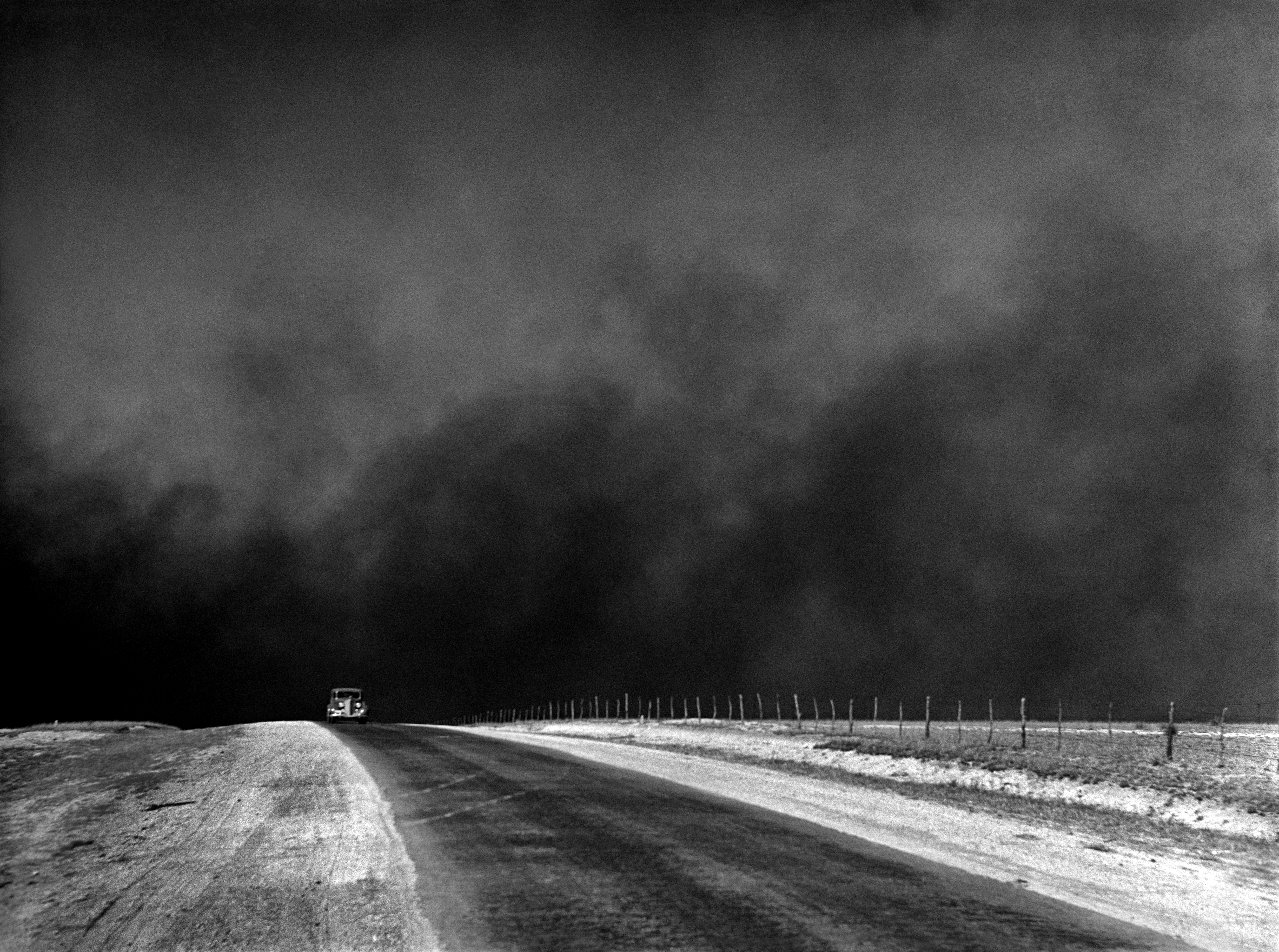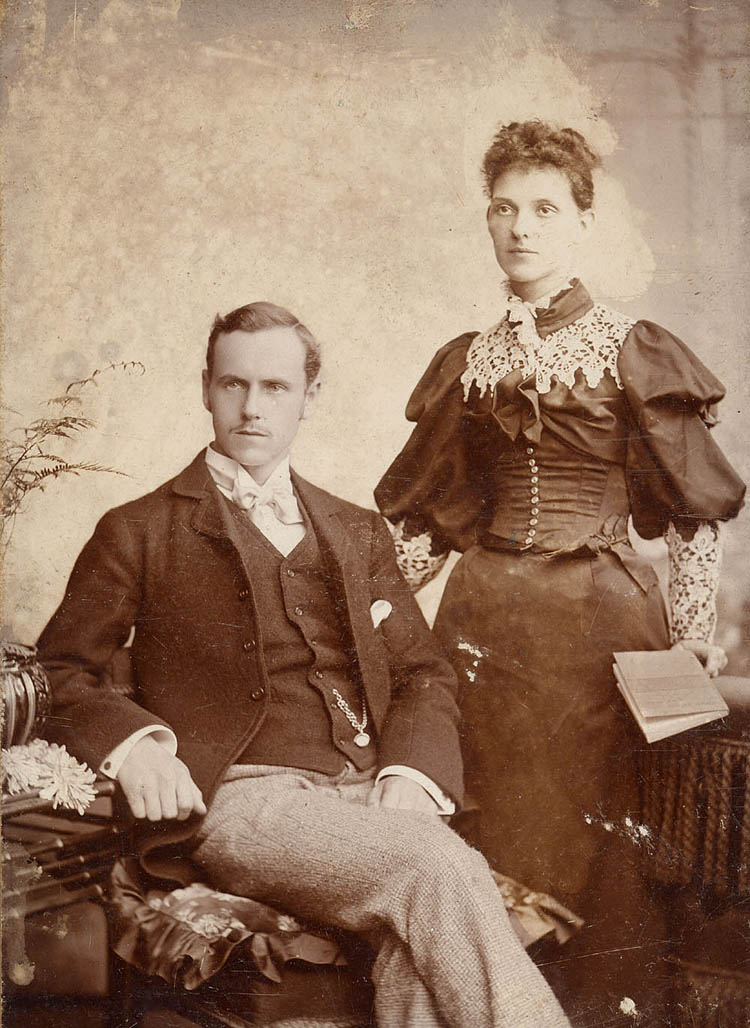|
Gum Over Platinum
Gum over platinum is a historical chemical photography, photographic process, which was commonly used in art photography. It is a very complex process, in which a specially treated platinum print photograph is coated with washes of gum arabic, then re-exposed to the same photographic negative. The finished process results in a sepia toned print, and is said to impart added luminosity and depth. It is sometimes called "pigment over platinum". To sensitize the gum arabic it must first be placed in contact with ammonium or potassium dichromate. Gum arabic is not photosensitive by itself. To clear the chromic acid, the print is washed in 1% potassium metabisulfite after proper development in water. Interested individuals should read up on the process before attempting, as the chromic acids are very dangerous to work with. The mechanics of the gum portion is not entirely known; what occurs is the exposed gum is hardened and becomes water-insoluble. Upon washing, the unexposed portions ... [...More Info...] [...Related Items...] OR: [Wikipedia] [Google] [Baidu] |
Photography
Photography is the visual art, art, application, and practice of creating durable images by recording light, either electronically by means of an image sensor, or chemically by means of a light-sensitive material such as photographic film. It is employed in many fields of science, manufacturing (e.g., photolithography), and business, as well as its more direct uses for art, film and video production, recreational purposes, hobby, and Mass communication, mass communication. Typically, a Lens (optics), lens is used to focus (optics), focus the light reflected or emitted from objects into a real image on the light-sensitive surface inside a camera during a timed Exposure (photography), exposure. With an electronic image sensor, this produces an Charge-coupled device, electrical charge at each pixel, which is Image processing, electronically processed and stored in a Image file formats, digital image file for subsequent display or processing. The result with photographic emulsion is ... [...More Info...] [...Related Items...] OR: [Wikipedia] [Google] [Baidu] |
Art Photography
Fine-art photography is photography created in line with the vision of the photographer as artist, using photography as a medium for creative expression. The goal of fine-art photography is to express an idea, a message, or an emotion. This stands in contrast to representational photography, such as photojournalism, which provides a documentary visual account of specific subjects and events, literally representing objective reality rather than the subjective intent of the photographer; and commercial photography, the primary focus of which is to advertise products, or services. History Invention through 1940s One photography historian claimed that "the earliest exponent of 'Fine Art' or composition photography was John Edwin Mayall", who exhibited daguerreotypes illustrating the Lord's Prayer in 1851. Successful attempts to make fine art photography can be traced to Victorian era practitioners such as Julia Margaret Cameron, Charles Lutwidge Dodgson, and Oscar Gustave Rejla ... [...More Info...] [...Related Items...] OR: [Wikipedia] [Google] [Baidu] |
Platinum Print
Platinum prints, also called ''platinotypes'', are photographic prints made by a monochrome printing process involving platinum. Platinum tones range from warm black, to reddish brown, to expanded mid-tone grays that are unobtainable in silver prints. Unlike the silver print process, platinum lies on the paper surface, while silver lies in a gelatin or albumen emulsion that coats the paper. As a result, since no gelatin emulsion is used, the final platinum image is absolutely matte with a deposit of platinum (and/or palladium, its sister element which is also used in most platinum photographs) absorbed slightly into the paper. Platinum prints are the most durable of all photographic processes. The platinum group metals are very stable against chemical reactions that might degrade the print—even more stable than gold. It is estimated that a platinum image, properly made, can last thousands of years. Some of the desirable characteristics of a platinum print include: * The r ... [...More Info...] [...Related Items...] OR: [Wikipedia] [Google] [Baidu] |
Photograph
A photograph (also known as a photo, image, or picture) is an image created by light falling on a photosensitive surface, usually photographic film or an electronic image sensor, such as a CCD or a CMOS chip. Most photographs are now created using a smartphone/camera, which uses a lens to focus the scene's visible wavelengths of light into a reproduction of what the human eye would see. The process and practice of creating such images is called photography. Etymology The word ''photograph'' was coined in 1839 by Sir John Herschel and is based on the Greek φῶς ('' phos''), meaning "light," and γραφή (''graphê''), meaning "drawing, writing," together meaning "drawing with light." History The first permanent photograph, a contact-exposed copy of an engraving, was made in 1822 using the bitumen-based " heliography" process developed by Nicéphore Niépce. The first photographs of a real-world scene, made using a camera obscura, followed a few years later at Le ... [...More Info...] [...Related Items...] OR: [Wikipedia] [Google] [Baidu] |
Gum Arabic
Gum arabic, also known as gum sudani, acacia gum, Arabic gum, gum acacia, acacia, Senegal gum, Indian gum, and by other names, is a natural gum originally consisting of the hardened sap of two species of the ''Acacia'' tree, ''Senegalia senegal'' and '' Vachellia seyal.'' The term "gum arabic" does not legally indicate a particular botanical source, however. The gum is harvested commercially from wild trees, mostly in Sudan (80%) and throughout the Sahel, from Senegal to Somalia. The name "gum Arabic" (''al-samgh al-'arabi'') was used in the Middle East at least as early as the 9th century. Gum arabic first found its way to Europe via Arabic ports, so retained its name. Gum arabic is a complex mixture of glycoproteins and polysaccharides, predominantly polymers of arabinose and galactose. It is soluble in water, edible, and used primarily in the food industry and soft-drink industry as a stabilizer, with E number E414 (I414 in the US). Gum arabic is a key ingredient in ... [...More Info...] [...Related Items...] OR: [Wikipedia] [Google] [Baidu] |
Photographic Negative
In photography, a negative is an image, usually on a strip or sheet of transparent plastic film, in which the lightest areas of the photographed subject appear darkest and the darkest areas appear lightest. This reversed order occurs because the extremely light-sensitive chemicals a camera film must use to capture an image quickly enough for ordinary picture-taking are darkened, rather than bleached, by exposure to light and subsequent photographic processing. In the case of color negatives, the colors are also reversed into their respective complementary colors. Typical color negatives have an overall dull orange tint due to an automatic color-masking feature that ultimately results in improved color reproduction. Negatives are normally used to make positive prints on photographic paper by projecting the negative onto the paper with a photographic enlarger or making a contact print. The paper is also darkened in proportion to its exposure to light, so a second reversal resul ... [...More Info...] [...Related Items...] OR: [Wikipedia] [Google] [Baidu] |
Sepia Tone
In photography, toning is a method of altering the color of black-and-white photographs. In analog photography, it is a chemical process carried out on metal salt-based prints, such as silver prints, iron-based prints ( cyanotype or Van Dyke brown), or platinum or palladium prints. This darkroom process cannot be performed with a color photograph. The effects of this process can be emulated with software in digital photography. Sepia is considered a form of black-and-white or monochrome photography. Chemical toning Most toners work by replacing the metallic silver in the emulsion with a silver compound, such as silver sulfide (Ag2S) in the case of sepia toning. The compound may be more stable than metallic silver and may also have a different color or tone. Different toning processes give different colors to the final print. In some cases, the printer may choose to tone some parts of a print more than others. Toner also can increase the range of shades visible in a print ... [...More Info...] [...Related Items...] OR: [Wikipedia] [Google] [Baidu] |
Luminosity
Luminosity is an absolute measure of radiated electromagnetic power (light), the radiant power emitted by a light-emitting object over time. In astronomy, luminosity is the total amount of electromagnetic energy emitted per unit of time by a star, galaxy, or other astronomical object. In SI units, luminosity is measured in joules per second, or watts. In astronomy, values for luminosity are often given in the terms of the luminosity of the Sun, ''L''⊙. Luminosity can also be given in terms of the astronomical magnitude system: the absolute bolometric magnitude (''M''bol) of an object is a logarithmic measure of its total energy emission rate, while absolute magnitude is a logarithmic measure of the luminosity within some specific wavelength range or filter band. In contrast, the term ''brightness'' in astronomy is generally used to refer to an object's apparent brightness: that is, how bright an object appears to an observer. Apparent brightness depends on both the l ... [...More Info...] [...Related Items...] OR: [Wikipedia] [Google] [Baidu] |
Platinum
Platinum is a chemical element with the symbol Pt and atomic number 78. It is a dense, malleable, ductile, highly unreactive, precious, silverish-white transition metal. Its name originates from Spanish , a diminutive of "silver". Platinum is a member of the platinum group of elements and group 10 of the periodic table of elements. It has six naturally occurring isotopes. It is one of the rarer elements in Earth's crust, with an average abundance of approximately 5 μg/kg. It occurs in some nickel and copper ores along with some native deposits, mostly in South Africa, which accounts for ~80% of the world production. Because of its scarcity in Earth's crust, only a few hundred tonnes are produced annually, and given its important uses, it is highly valuable and is a major precious metal commodity. Platinum is one of the least reactive metals. It has remarkable resistance to corrosion, even at high temperatures, and is therefore considered a noble metal. ... [...More Info...] [...Related Items...] OR: [Wikipedia] [Google] [Baidu] |








